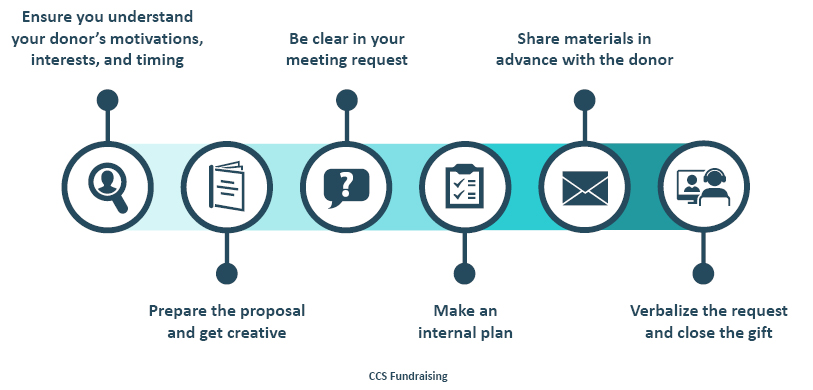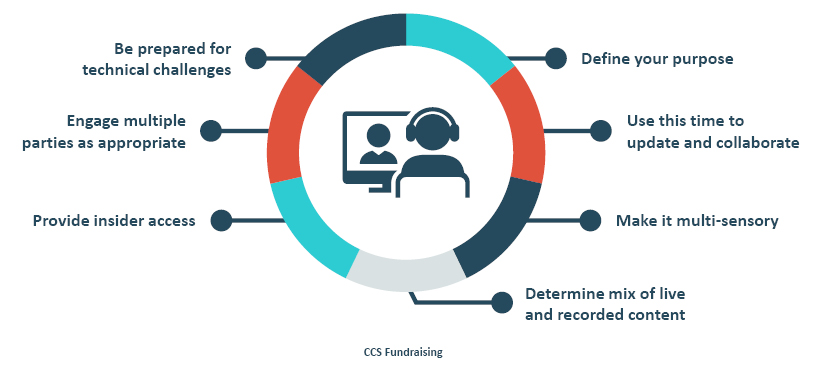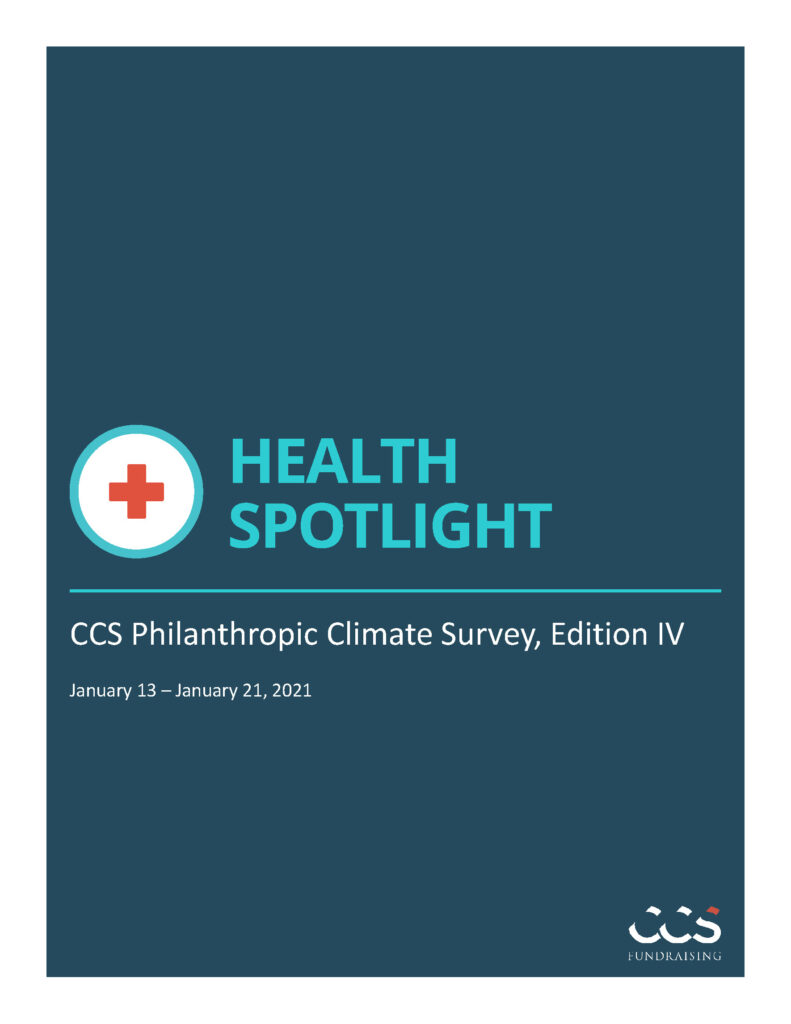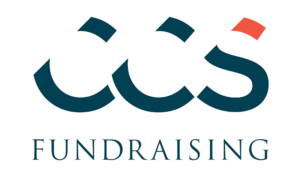It has been one year since the World Health Organization declared COVID-19 a global pandemic in March 2020. Last spring, many faith communities completely suspended all in-person gatherings and worship moved exclusively online. According to research conducted by CCS Fundraising in summer 2020,[1] about 66% of Catholic and Episcopal parishes took an all-online approach. Others rapidly adopted hybrid worship and fellowship offerings as local health guidelines allowed, which involved a mix of in-person and online gatherings.
At first, this was an uncomfortable, sudden jolt that left a lot of congregations counting down the days until this was all over. One year later, these adjustments that were meant to be temporary are still present. Broad swaths of the population have fully adjusted to this new virtual lifestyle for work, worship, and social activities.
While many people are yearning for a full reversal of all adaptations that have occurred over the past year, the reality is that at least some of these changes are likely here to stay after the COVID-19 pandemic has subsided.
Parishes need to be ready for a hybrid model of worship and fellowship, similar to how many companies are preparing for a mix of in-person and remote work. The remainder of this article provides an overview of our recommended strategies to ensure that you are prepared to maintain a hybrid worship model for the short-, medium-, and long-term, and that you can continue to sustain philanthropic support in a hybrid environment.
One: Enlist a Plan Ahead Team
While no one can accurately predict when a “return to normalcy” will occur, we can plan for various potential next steps based on experiences thus far. We know certain activities have led to resurgences in outbreaks in local communities and we know this is followed by stricter lockdowns. We also know people will vary on how they decide to access the vaccine throughout the ongoing rollout process.
Amid uncertainty about the future, what we can do now is some scenario planning. We recommend creating a Plan Ahead Team,[2] which can be led by clergy and lay leaders. The Plan Ahead Team would be responsible for mapping out scenarios (e.g., full return to in-person worship, hybrid worship services) that are personalized to your community. For example:
- Perhaps you have more families with small children. Through our engagements with clients, we have heard many families prefer watching services from home to avoid the stress of getting the kids ready for Sunday service.
- Maybe you have more elderly parishioners who may be more vulnerable to COVID-19. These individuals are likely going to be more cautious with how they return to normal activities.
- Are you reliant on events and auctions? You may need to focus less time on event planning to support people at a physical event and spend more time recruiting quality sponsors.
Whatever the demographics of your faith community, map out personalized scenarios for your parishioners. In each scenario, consider the segments of your population and think strategically about what forms of communication are needed to be supportive and maintain consistent and clear messaging about the importance of giving.
Two: Ensure You Are Fully Equipped
Many aspects of today’s virtual world could be here to stay permanently in the American lifestyle, such as hybrid workspaces and increased virtual gatherings.[3] It is wise to assume the same for non-work-related activities, including worship services and parish gatherings. The likely continuation of a digital audience cannot be neglected as focus begins to shift back to in-person service and gatherings.
As such, your communities cannot, and must not, abandon best practices developed throughout the course of the pandemic. Use this pre-reemergence time to ensure you are properly equipped with the necessary tools and systems to sustain a more robust operating model long-term.
- Continue posting regular parish updates – of both a social and financial nature – via social media pages. Whether it be Facebook, Instagram, YouTube, or another platform, social media will play increasingly vital roles in parish life moving forward. Check to see which social media platforms are receiving the most attention from your community and invest in regular updates on these platforms.
- If your parish has a website, provide ongoing updates that are easy to find. Particularly in older parish communities where social media may not be a viable communication method, websites provide easy avenues to maintain social aspects of parish life.
- Think through how single events can have both a virtual and an in-person option. For worship and other events, some parishioners may want to attend in-person while others may want to attend virtually. How can your parish logistically accommodate these preferences to maximize engagement and community?
Three: Make Giving a Central Component of Planning
CCS Fundraising’s research revealed many faith communities early in the pandemic utilized a variety of online platforms to share worship and fellowship information including their website (88%), engagement on social media platforms like Facebook (80%), and online digital bulletins (46%).[4]
However, across these online resources, giving was often not prominently mentioned – 45% of congregations mentioned giving on their websites, 15% on Facebook, and 22% in bulletins and newsletters. This research shows that in what was undoubtedly a rapid response to adjust service models to be fully online or hybrid, ensuring that giving continued virtually was not always part of the plan.
De-emphasizing giving can majorly impact the financial security of faith communities. Though the full impact of the pandemic on the financial security of faith communities is yet to be seen, early research may illustrate the downstream effects of not fully considering how to sustain giving in a virtual environment. The Lake Institute on Faith and Giving at the Lilly Family School of Philanthropy reported an overall 6% decrease in giving to congregations as of June 2020.[5] CCS’s fourth-edition Philanthropic Climate Survey in January 2021 showed that 51% of religion respondents reported a decrease in fundraising at their organization in 2020.[6]
A hybrid worship model is likely here to stay, at least a little longer than most parishes expected or planned. A commitment to maintain consistent levels of giving and continued stewardship must be a central consideration throughout your planning. We recommend that parishes, at minimum:
- Continue providing online options for parishioners to give. While in-pew gifts are the heart and soul of parish giving, online payment options need to be a central aspect of future plans.
- Make a plan for how discussions of giving will be promoted in the hybrid environment. In addition to providing online giving options, think through where in your hybrid communications you will draw attention to giving and the financial needs of your parish.
Final Reflections
While no one can accurately predict the trajectory of a return to normalcy, it may be hard to turn away from the efficiency and flexibility that digital connections and community have revealed once lockdowns have ceased. By preparing your parish now through following the steps and recommendations of this article, the financial status of your parish can exceed pre-pandemic levels, and your community will feel far more comfortable with the flexibility and adaptability of a modern parish.
You may find these resources of interest as you help your parish plan for the short-, medium-, and long-term:
- “Digital Fundraising for Easter: A Four-Week Plan for Parishes”
- Religious Organization Spotlight: CCS Philanthropic Climate Survey, Edition IV
- “Adapting to the COVID-19 Crisis: A Look into Catholic and Episcopal Dioceses and Parishes”
[1] https://ccsfundraising.com/adapting-to-the-covid-19-crisis-a-look-into-catholic-and-episcopal-dioceses-and-parishes/
[2] https://www.mckinsey.com/business-functions/strategy-and-corporate-finance/our-insights/getting-ahead-of-the-next-stage-of-the-coronavirus-crisis
[3] https://www.nytimes.com/interactive/2021/02/17/magazine/remote-work-return-to-office.html
[4] https://ccsfundraising.com/adapting-to-the-covid-19-crisis-a-look-into-catholic-and-episcopal-dioceses-and-parishes/
[5] https://philanthropy.iupui.edu/institutes/lake-institute/covid-study.html
[6] https://go2.ccsfundraising.com/PhilanthropicClimateSurveyEditionIV-Religion_DownloadPage.html



